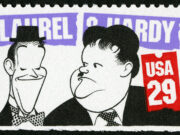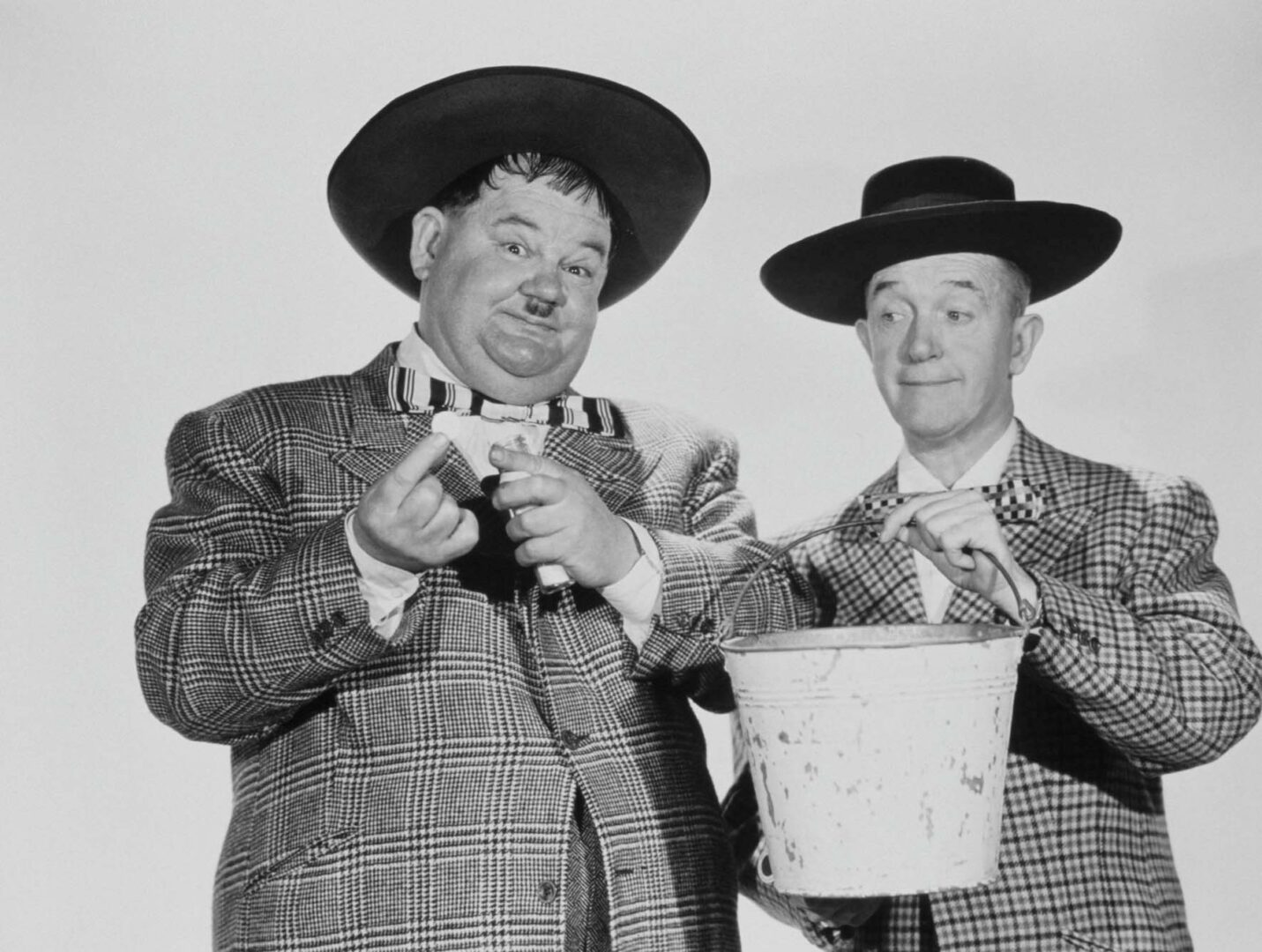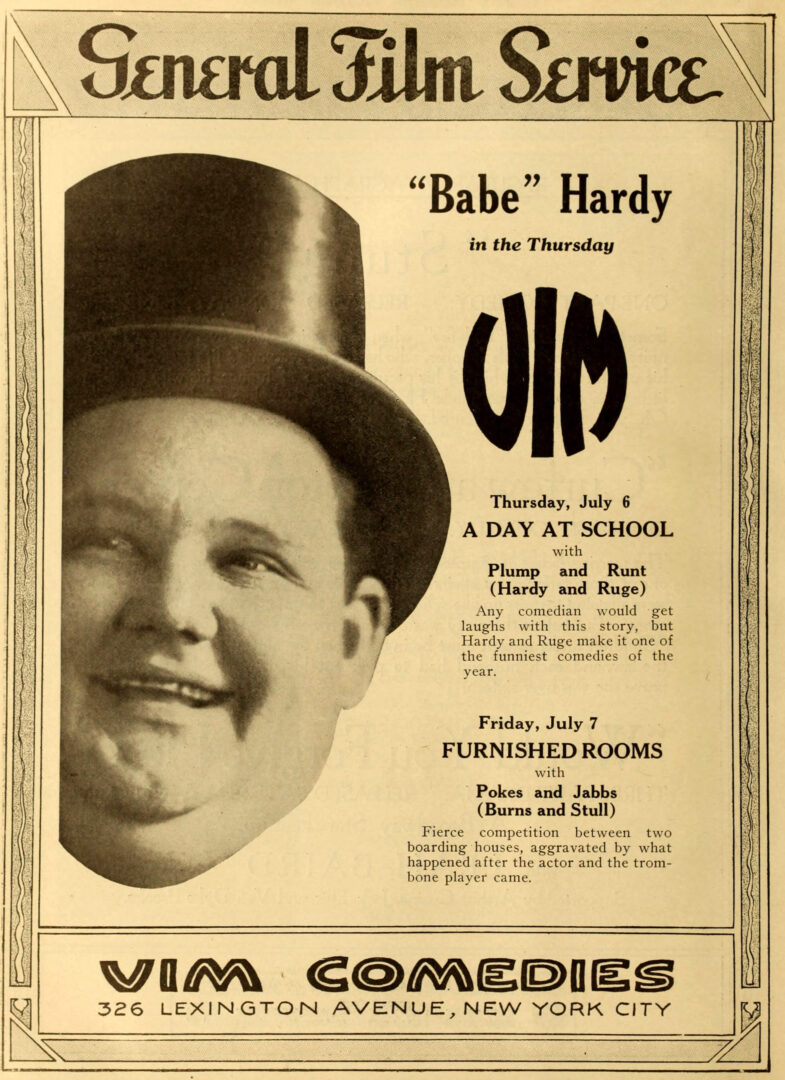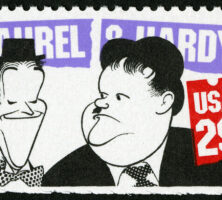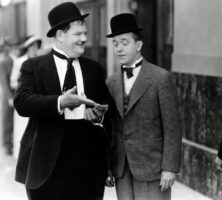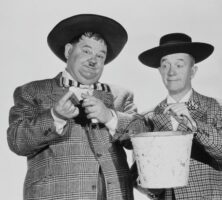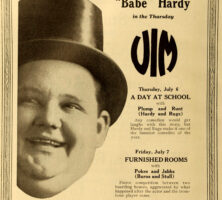Oliver Hardy was a successful character actor in silent films and a partner in the Academy Award–winning comedy team of Laurel and Hardy. Born and raised in Georgia, Hardy performed in theater and vaudeville shows around the state early in his career, which laid the foundation for his later success as a film comedian.
Beginnings
Oliver Hardy was born Norvell Hardy on January 18, 1892, in Harlem, Georgia, a town located just west of Augusta. His father, Oliver Hardy, died ten months later, and his mother, Emily Norvell Hardy, supported her five children by managing a series of boardinghouses, first in Madison, then in Covington and Athens, and finally in Milledgeville. While quite young, Hardy developed a love for singing. He performed in local theatricals and, as a college student, in events at Georgia Military College and Young Harris College.
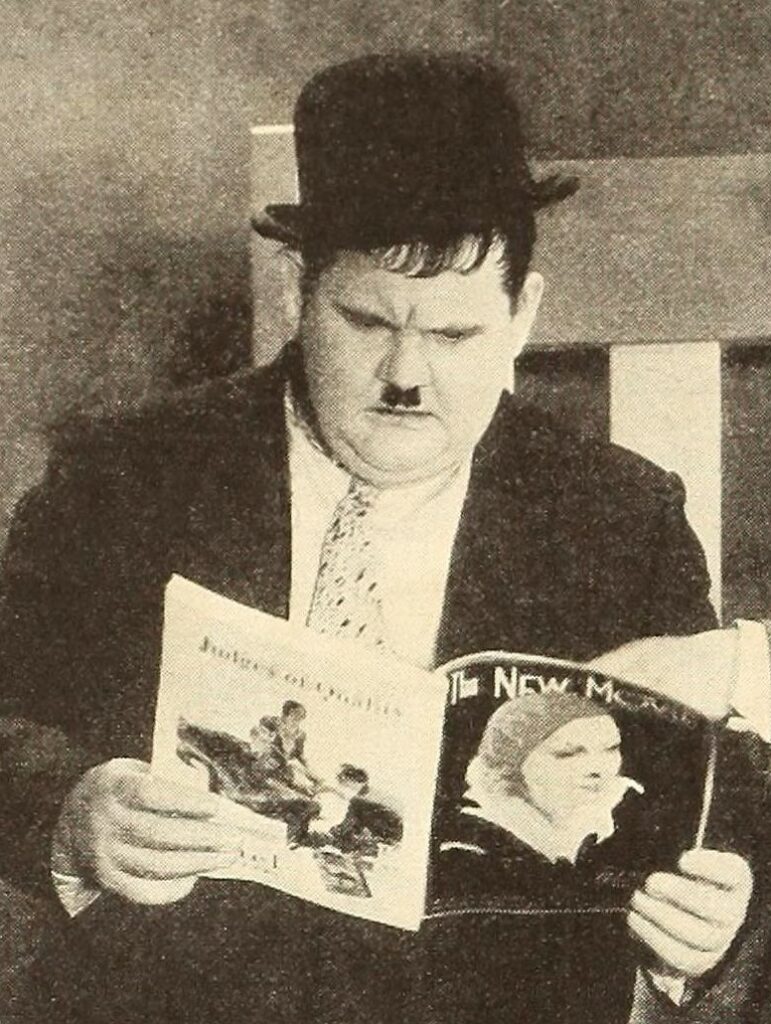
The New Movie, Feb. 1930
Returning to Milledgeville in 1910, Hardy worked behind the scenes at a local vaudeville house and a movie theater. At some point during this period he adopted the name Oliver Norvell Hardy, although his friends often referred to him as “Babe.” In 1913 he began working in the flourishing film industry in Jacksonville, Florida, occasionally traveling to New York to work on films there. In 1917, after acting in many short and feature films, he decided to pursue his career in California.
Hollywood
In Hollywood, as in Florida, Hardy worked steadily, specializing in the portrayal of a conventional character in silent films known as the “heavy,” a large, physically intimidating villain. (Over six feet tall, Hardy weighed around 300 pounds for most of his adult life.)
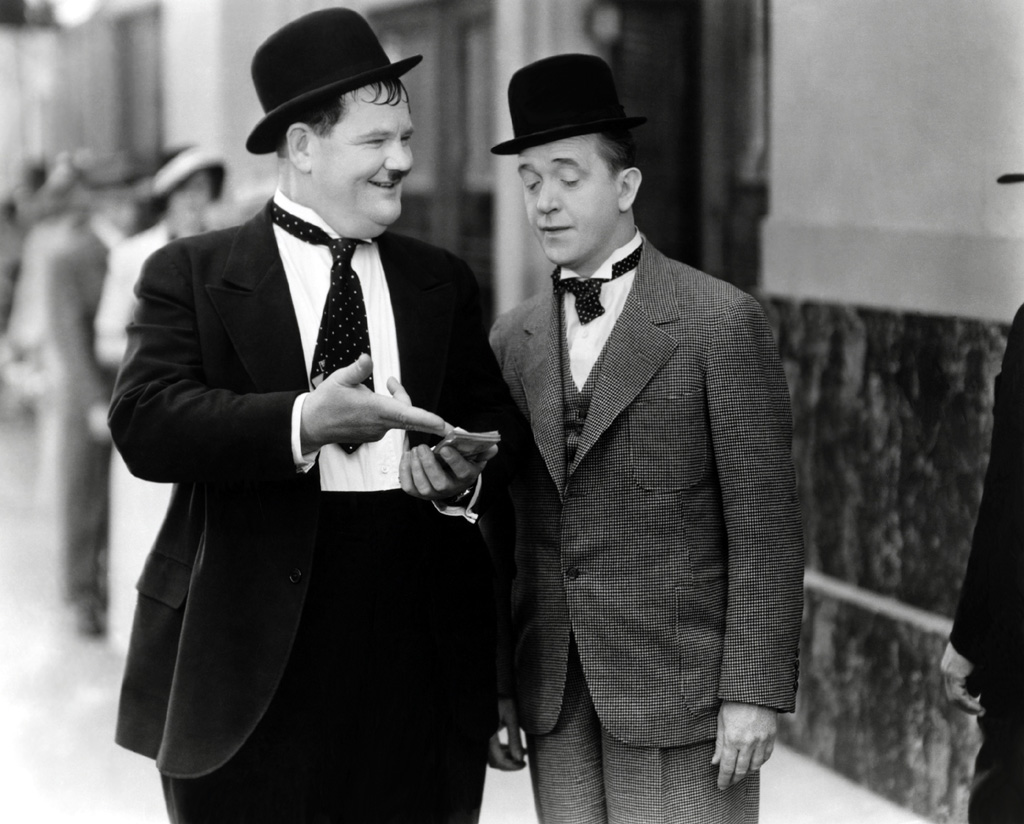
Image from Insomnia Cured Here
In 1926, after appearing in some ninety Hollywood films, Hardy became a contract player for both comic and serious roles with Hal Roach Studios, one of the more important small studios of the era. The studio soon cast Hardy in several films with Stanley Laurel (1890-1965), with whom Hardy had occasionally worked before. Born Arthur Stanley Jefferson, Laurel was an English music-hall comedian who had come to America in a theatrical company as an understudy to Charlie Chaplin. At the time he was teamed with Hardy, Laurel was an up-and-coming film comedian, writer, and director.
The Laurel and Hardy Films
Together Laurel and Hardy were so appealing that the studio launched a new series of short comedies advertised as “Laurel and Hardy” films. The first, The Second Hundred Years, appeared in 1927.
In their subsequent films Laurel and Hardy gradually developed the characters they would play for the rest of their lives. As childlike adults destined to fail but ever hopeful of success, these characters fall within a “tradition of innocent fools in a dangerous world” that includes, according to film scholar Ted Sennett, the characters played by fellow silent comedians Charlie Chaplin, Buster Keaton, and Harry Langdon. The duo’s usual costumes were slightly seedy, old-fashioned suits with stand-up collars and derbies, suggesting characters who aspire to a dignity that they can never quite achieve. Hardy adopted the role of the self-assured but utterly incompetent leader, whose grandiose gestures gave exaggerated importance to the simplest acts.
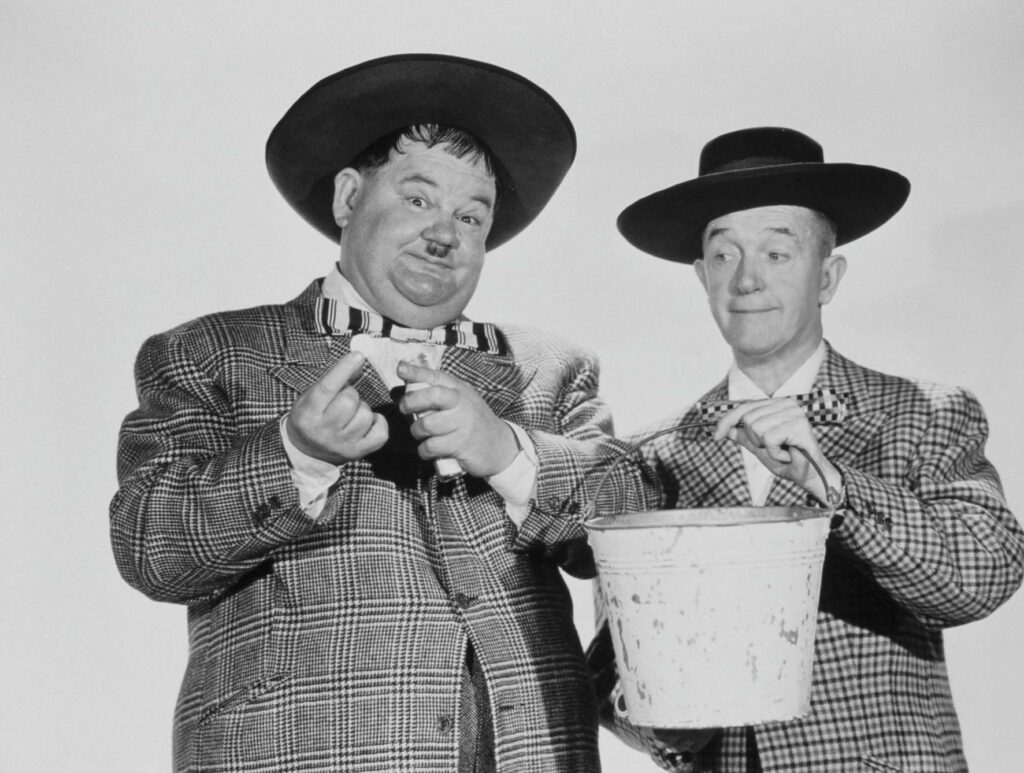
Image from Insomnia Cured Here
According to critic Gerald Mast, a “contempt for affectation and pretension” is a hallmark of the work of American comedians from Chaplin to Woody Allen. Many critics consider Laurel and Hardy, along with Chaplin, Keaton, and the Marx Brothers, to be among the finest practitioners of slapstick, a type of physical comedy aimed at mocking such aspirations to dignity. With precise comic timing, Laurel and Hardy typically engaged in what biographer John McCabe terms “reciprocal destruction,” a sequence of physical gags in which the characters take revenge upon each other. The gags ultimately build to a chaotic ending that exposes and ridicules the foibles of human nature. Filmmakers of the 1960s employed similar techniques during a resurgence of slapstick comedy that resulted in such films as It’s a Mad Mad Mad Mad World (1963) and The Great Race (1965).
From 1927 to 1940 Laurel and Hardy made sixty short comedies and sixteen feature films for Hal Roach Studios, including Big Business (1929), which is often cited as one of the finest short comedies of the silent era, and The Music Box, which won an Academy Award as the best short film of 1931-32. Outstanding among their feature films for Roach Studios are Sons of the Desert (1933) and Way Out West (1937). While some silent-film actors, like Keaton, saw their careers decline with the advent of sound, Laurel and Hardy’s flourished, as Laurel’s English accent and Hardy’s southern accent and singing brought new dimensions to their characters. The team also proved skillful in their melding of visual and verbal humor, adding dialogue that served to enhance rather than replace their popular sight gags.
Because of creative disagreements with Hal Roach Studios, in 1941 the team left for Twentieth Century Fox and MGM. Although Laurel and Hardy believed their talents ideally suited to short films, these larger studios were losing interest in that less-profitable medium and cast the team in a series of modestly budgeted and poorly written features. Moreover, the studios did not allow the duo to engage in the improvisation that had been so vital to the success of their earlier work and insisted instead that the scripts be strictly followed. Discouraged once again, in 1945 Laurel and Hardy retired from films, returning only for the poorly received Atoll K in 1951.
Final Years
In 1947 Laurel and Hardy began a year of concert appearances in Europe and toured again in 1952 and 1953-54. Hardy also took a supporting role in George Waggner’s film The Fighting Kentuckian (1949) and made a cameo appearance in Frank Capra’s Riding High (1950).
Plans for a television series were shelved as the aging comedians suffered declining health. After a series of strokes, Hardy died on August 7, 1957. Laurel retired and lived until 1965, surviving to see the duo’s best work rediscovered by appreciative audiences through television and classic film revivals. A few months after Laurel’s death, the inaugural meeting of the Sons of the Desert, the official Laurel and Hardy appreciation society, was held in New York City. Since that time, chapters of the organization have formed across North America and Europe, as well as in Australia.
Continuing Appeal
Today Laurel and Hardy remain among the most popular of Hollywood’s early comedians. Critics have identified the enduring influence of Laurel and Hardy in the work of later comedians, from the antics of Dean Martin and Jerry Lewis in the 1950s, to Eddie Murphy’s Hardy-like portrayal of Sherman Klump in the Nutty Professor (1996). Many Laurel and Hardy films—short subjects and features—are available on videotape and DVD, while the compact discs Songs and Sketches from the Hal Roach Films (2001) and Trail of the Lonesome Pine (2001) preserve examples of Hardy’s singing.
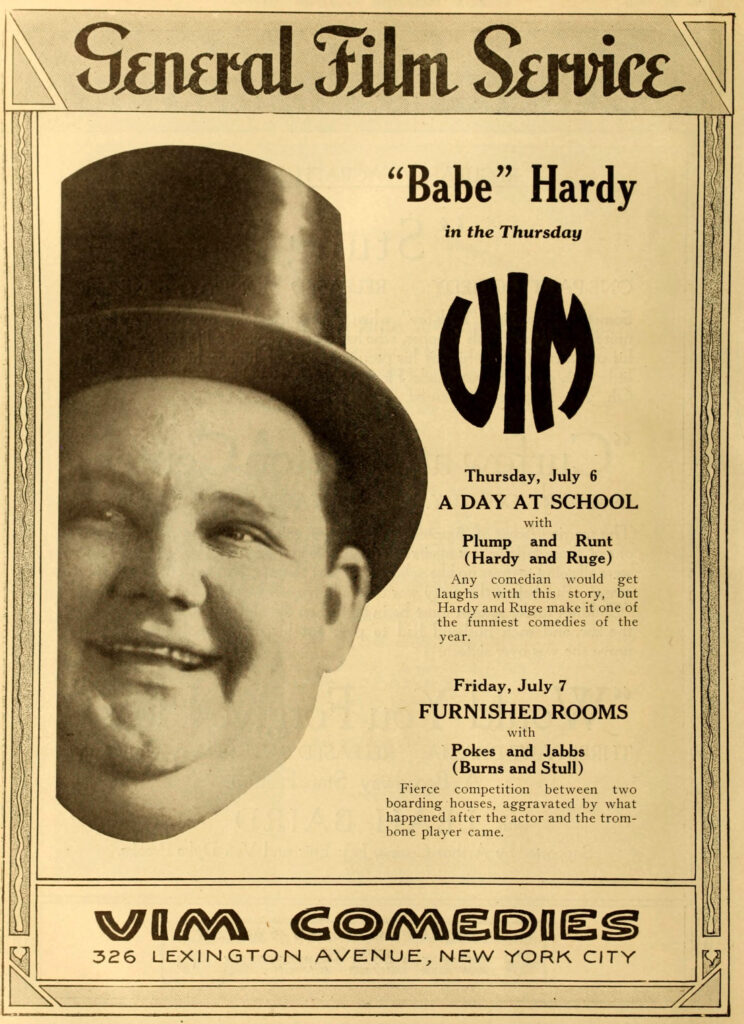
Image from Wikimedia
The town of Harlem maintains a Laurel and Hardy Museum. (Another museum is operated in Laurel’s birthplace, Ulverston, in the Lake District of England.) Harlem recognizes its native son on the first Saturday of every October with its Oliver Hardy Festival.


